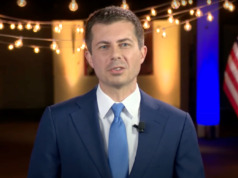
When choosing a charter operator, there are many different factors to consider. Customers routinely focus on price, the type of aircraft available, service, and amenities. But with more than 2,000 U.S. entities offering air charter transportation, how can you differentiate among them and find companies where safety is paramount?
To make an informed choice, you need to do your homework and ask some questions. A good place to start is the website of the Air Charter Safety Foundation (ACSF). Under the Products & Services tab, click on “Chartering An Aircraft.” There you will find a concise four-page overview of air charter services and the role charter brokers play.
Operators should be willing to answer and provide some basic questions and documents to potential customers. These include a copy of their FAA Air Carrier Certificate, their DO-85 (authorized aircraft document), and information on the types and limits of insurance they carry and who and what that insurance covers.
It also can be instructive to check on the accident/incident records of charter operators, and whether they have been subject to FAA enforcement action.
The National Transportation Safety Board 2019-2020 “Most Wanted List” notes that air taxi and on-demand charter providers are not required to meet the same safety requirements that FAR Part 121 (scheduled airlines) must adhere to. NTSB is recommending that all Part 135 operators “implement Safety Management Systems (SMS) and flight-data monitoring programs that address the unique risks associated with their operations.”
Among many other elements, an SMS program incorporates checklists for assessing and mitigating the risks associated with any given flight. Potential factors considered include: day or night operations, hazardous terrain, inclement weather, short runways, challenging approach paths, airport restrictions, and experience levels and training standards of the pilots. Ensuring pilots have a plan in place prior to takeoff to deal with anticipated challenges is much preferable to the crew trying to cobble one together as they begin the descent to the destination airport.
Nearly two decades ago, FAA and U.S. airlines became concerned that anticipated growth in flight operations would result in rising numbers of accidents in the years ahead unless some way was found to drive down accident rates.
So the agency developed a voluntary safety program, the Flight Operational Quality Assurance (FOQA) plan, which permits operators and pilots to share de-identified aggregate information with FAA. This data sharing permits FAA to identify national trends in aircraft operations, address operational risk factors, and implement corrective actions. These data also are mined by carriers to identify safety issues specific to their own operations.
Airline FOQA programs have been widely adopted by U.S. airlines and select foreign carriers. They have been highly successful in lowering accident rates across the industry and focusing attention on problem areas.
More recently, ACSF, working in cooperation with FAA, established a very similar program aimed at Part 135 operators. ACSF says more than 150 operators are now participating in the foundation’s Aviation Safety Action Program.
“That ASAP program… has launched a whole new stream of members and activity,” said ACSF President Bryan Burns. The program began six years ago with just three operators based in the Minneapolis area. The total in mid-October was 155 and is growing each month. Of that number, 75 are air charter operators. Another 80 Part 91 flight departments also are ASAP participants because they recognize the benefits it offers.
In terms of “measureable and quantifiable, when it comes to safety programs that truly move the needle of an operation as opposed to just guessing and assuming,” Burns said, “SMS and ASAP are very valuable tools. They truly improve an operation when it comes to mitigating risk.” BAA
David Collogan has covered aviation in Washington, DC for more than four decades. This award-wining journalist is known as one of the most knowledgeable, balanced, wary, and trusted journalists in the aviation community.




